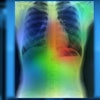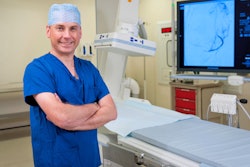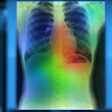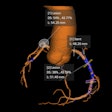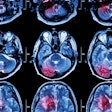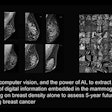The use of AI in radiation protection requires regulation to ensure patient safety and better patient outcomes, according to radiologist and AI-transition facilitator Dr. Hugues Brat, CEO and founder of Re:Source Healthcare.
He noted that while AI’s utility for denoising and optimizing image quality in service of minimizing radiation is well established, its potential for enhancing radiation safety throughout the diagnostic process has not received as much attention. “Our understanding of AI’s impact should focus not only on its technical applications but also on its procedural efficiency and, most importantly, its lifetime impact on patient safety.”
In a EuroSafe 2025 e-poster, Brat, who was formerly head of radiology at Sion, Martigny & Monthey in Switzerland, argued that AI has introduced several critical improvements throughout the diagnostic process that have increased radiation safety.
During the pre-examination period, AI-enabled clinical decision support systems (CDS) can assist in determining the appropriate imaging modality, which Brat notes also reduces the number of unnecessary exams. During preparation and scanning, algorithms can assist in positioning patients, determining the best protocols to use, and monitoring the procedure to ensure optimal results and adherence to the safety principle of “as low as reasonably achievable” (ALARA). Following exams, algorithms assist with image processing, analysis, and facilitating exam reading.
He foresees the use of real-time image quality assessment and dose checks to monitor the effectiveness of the AI tools as future improvements as well.
 DMS = dose management systems; QC = quality control.Courtesy Dr. Hugues Brat; EuroSafe 2025
DMS = dose management systems; QC = quality control.Courtesy Dr. Hugues Brat; EuroSafe 2025
While AI is rapidly becoming both ubiquitous and necessary, its deployment is not without challenges: There are issues of transparency and accuracy, the applicability of datasets to diverse and local populations, standardizing protocols, training for users, and ethical issues for patients in the form of data security and privacy, as well as misuse. Brat writes that ensuring fitness of data for local use and the oversight of dose management systems are of particular importance.
In addressing the challenges Brat sees with the integration of AI in the process -- e.g., accuracy and reliability, quality of data, adaptability, and monitoring -- he suggests that continuous testing using locally representative datasets can validate their clinical effectiveness and usefulness. In addition, he considers that regular, comprehensive training is critical to the effective use of these AI systems.
It’s imperative to tackle these issues in addressing the regulation of AI in radiation protection, according to Brat, who added that “AI in radiation protection is not a plug-and-play solution.”
He proposes that an effective regulatory framework should include the following:
- Standardization of protocols in using AI across imaging modalities
- Comprehensive training and support programs
- Clear definitions of legal responsibilities for any errors involving AI
- Establishment of guidelines for data privacy, security, and lack of bias in the use of AI
- A clear outline of the role of AI systems in clinical decision-making
- Data quality and validation procedure standards for AI
- The encouragement of research and innovation in AI
- Robust systems for monitoring and quality assurance of all AI used
- Standards developed for maintaining human skills along with the use of AI
 Courtesy Dr. Hugues Brat; EuroSafe 2025
Courtesy Dr. Hugues Brat; EuroSafe 2025
The last point mentioned above is critical because AI requires human supervision, Brat noted. He underscores that all AI-based systems are designed to assist radiologists and radiographers, not supplant them. “Regulation must safeguard this balance, ensuring that AI remains a tool to enhance human capabilities rather than replace them.”
Read the EuroSafe poster here.



